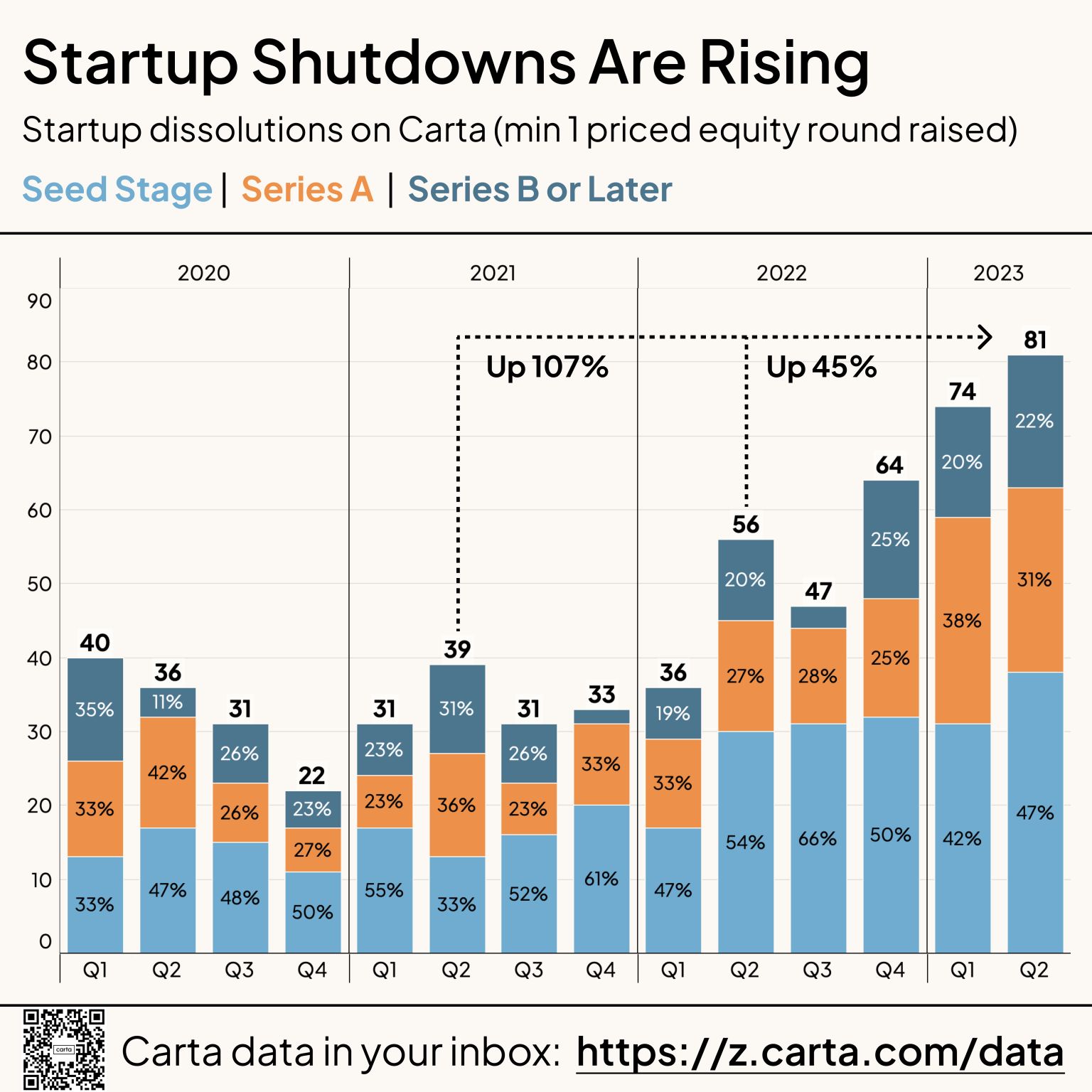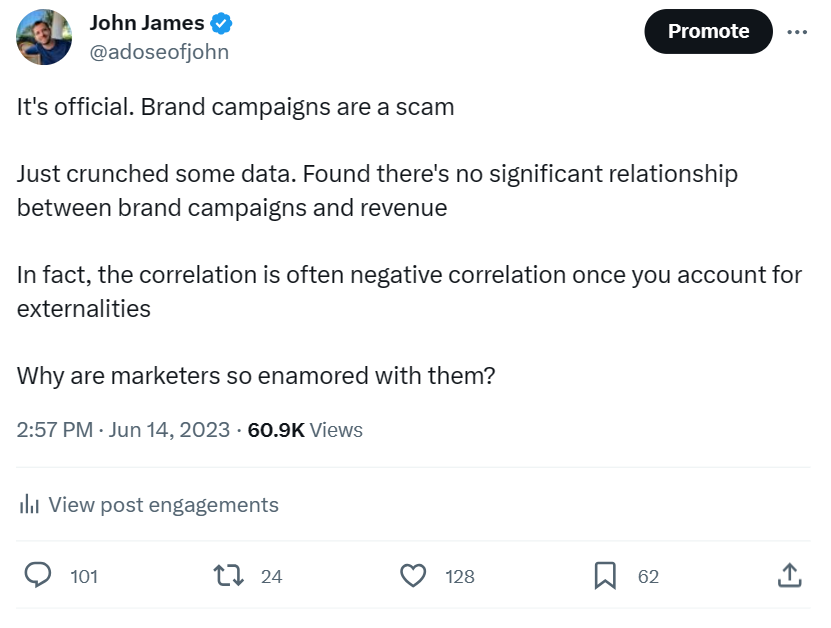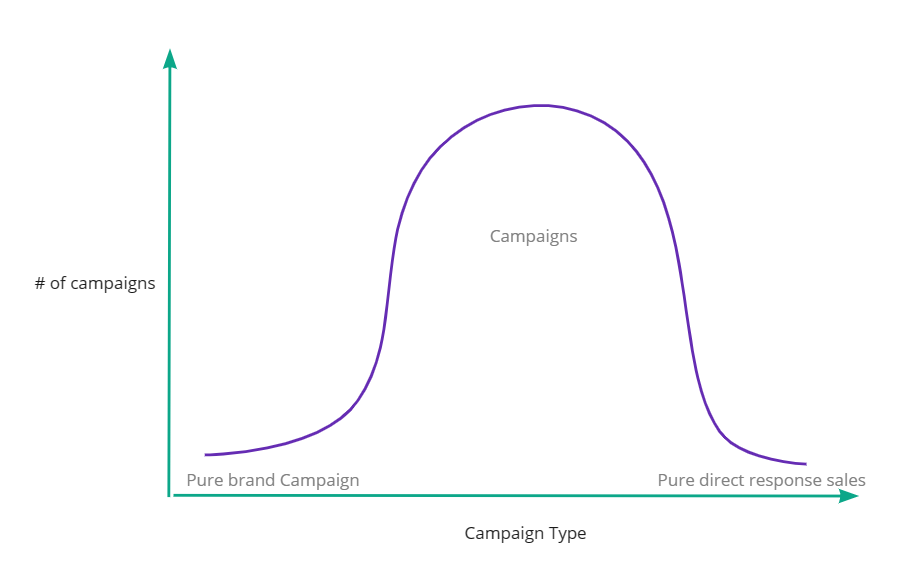
Not long ago–in a place far, far away (from Cannes)–five people debated the existence of double duty, exploring whether it was possible to deliver ‘brand’ and ‘performance’ together in one campaign. One side of the panel agreed that it’s possible, but rare. In their eyes, brand campaigns are superior because that’s what all the largest brands and most senior marketers concern themselves with. But, having witnessed initiatives that contribute to ‘brand’ more effectively than most brand campaigns ever did first-hand, I disagreed. So did Pip, having just witnessed the results from a recent campaign she ran with Moet. A campaign which proved double duty not only possible, but more effective.
The following day, after we’d all laid down our swords, I couldn’t stop thinking about this idea of brand campaigns. I’d recently seen Meta and Google reps pushing these onto some of my clients. This struck me as odd. ‘Performance marketing’ channels were now suggesting clients split their campaigns into multiple parts. Ensuring the advertiser covered the ‘full-funnel’ of brand ‘consideration’, ‘preference’ AND ‘performance’. Using terms like TOFU, MOFU and BOFU. And no, that’s not a new, modern fusion restaurant in Surrey Hills. Meta and Google were now encouraging small and medium-sized enterprises (SMEs) to target the entire funnel over a longer period of time.
Not only is this change in rhetoric ironic, it’s a symptom of a deeper problem within the marketing industry. In a time of low consumer confidence, white-collar job disruption, talks of recession and cost-cutting, brand seems to have become fashionable again. It’s even the soup du jour in the SaaS tech industry.
So, what’s changed? Why are tech companies hiring Chief Brand Officers? Where’s all this coming from?
One of the main culprits is the declining yields of digital media, something I’ve been warning people about since last year. Not so coincidentally, this was the exact time dissolutions in the startup sector started to rise (see Q2 2022 in the figure below).
But another more recent culprit has been the rapid deprecation in the accuracy of digital measurement systems, aka ‘attribution’. Digital attribution accuracy has been skewered as of late, mostly due to government policy changes and Apple’s continued data privacy crack-down. This means digital media reliant companies can no longer accurately measure the cause and effect nature of their spend.
There’s also a third layer–a deeper, more perennial factor that continues to lead everyone astray. And this, perhaps, is the most ironic: It’s marketers’ inability to define what a brand campaign is in the first place!
While I knew this was the case for quite some time, I needed proof.
The majority of businesses in advanced economies (98% in Australia) have under 200 employees and are not corporate, publicly-listed companies. Yet, marketing commentators almost exclusively talk about the marketing efforts of large, corporate brands. From the get-go, we’re exposed to commentary based on a small, unrepresentative sample of the population.
I stopped working in the corporate sector many years ago, focusing for the past decade on private business owners and executives (that other 98% of businesses) instead. I’ve found they tend to be far more discerning with marketing expenditure and squarely focused on commercial results as opposed to politics. For the simple fact that it’s often their own money on the line, not someone else’s. Plus they often have a large, vested interest in any upside that might result. Generally speaking, you tend to get a much wiser allocation of resources with a commercial lens than would otherwise be the case.
In this sector, it’s quite rare to meet anyone that stakes their hopes blindly on brand campaigns. In fact, they don’t care what you want to call your marketing. A brand campaign. A performance campaign. An advertising campaign or a marketing campaign. They only care whether it increases four things: revenue, profit, market share or the company’s valuation. And this is something you need to be able to prove via proper financial modeling. Campaigns that don’t perform are a luxury they simply can’t afford. Doesn’t matter what you call them.
So, I was a little surprised when a sample of people I spoke with didn’t actually know what a brand campaign was. Especially the ones that were buying them. Worse, they didn’t know what ‘brand’ was–or ‘advertising’ for that matter.
Intrigued, I needed to test this hypothesis with a larger sample. We needed to conduct robust market research to get to the bottom of this. Luckily, previous experience at a market research firm meant I knew how to conduct studies free from research error. I made sure I avoided use of any inflammatory, opinionated language or leading questions, then settled on a trusted research platform where we could target an unbiased sample to collect objective responses.
I could have said something more balanced but it wouldn’t have had the same effect. Besides, this wasn’t my first social media troll-rodeo.
The tweet above quickly went viral and caused a stir. What immediately became obvious was that this is a very divisive topic. Seasoned, less naive (and slightly jaded) marketing folk agreed with the statement. As did everyone in tech including some famous founders. No surprise there.
But for those on the agency side, it was a completely different story. It was like I’d told a bunch of children Santa wasn’t real. Not only did they refute the claim that brand campaigns were a scam, they were very convinced these campaigns were effective and even superior to ‘performance’ ones. Oh and also, I didn’t know what I was talking about.
Apparently, I needed to read How Brands Grow (1 and 2) and The Long and Short of It (which I have), as well as a slew of other frequently cited studies on the topic (which I have), most of which were sponsored by advertising agencies and industry lobby groups. I was also provided with incorrigible evidence “proving” that a host of award-winning brand campaigns–from Apple’s ‘Think Different’ to ‘Nike ads’ and ‘Got Milk’, among others–were effective.
I didn’t disagree, but when probed, none could describe how effective these campaigns actually were. No figures or hard data were cited to support their arguments. When asked, there were comments like, ‘You just can’t measure brand’, ‘It’s intangible’, ‘You need to measure the long-term, not just the short-term’ and ‘Not everything that can be measured counts and not everything that counts can be measured’. So on and so forth… Again, no surprise. I’d heard all of this before. So, I followed up by asking these same people what exactly is a brand campaign?
Silence.
A Mexican standoff followed–‘you define it first.’ Even semi-famous agency owners (whose books I have also read) weren’t game to put a definition in writing.
Strange, but also not entirely unexpected. In fact, hundreds of comments later, almost no one had attempted to define it in any detail. The only thing they all agreed on was that brand campaigns weren’t ‘performance’ (whatever that’s supposed to mean). We were back to square one.
Here are some of the comments:
@jcphankins
Not a direct response ad
@content_grinder
A brand campaign sells later. It doesn’t try to sell now.
@clairestricket
Brand = targets all potential customers.
The other (be it DR, activation or whatever you like to call it) targets customers imminently or currently in-market.
Brand = majority of commercial payback 6+ months after live date.
The other = majority of commercial payback in 6 months
@thisleke
Brand campaigns aim to establish presence in people’s minds, not generate immediate profits. Ads alone won’t prompt many people to buy Apple/Nike, but when shopping for laptops or sneakers, both Apple and Nike come to mind. Brand presence (recognition & reputation) is key.
@ajwillshire
Yes, measured “brand love” lags sales as well, it doesn’t lead. If you want someone to love your brand then first, make sure it’s a great product/service then second, make them buy it!
@ethandecker
There’s no accepted definition. Not at all. You’ve got a good point though it could be a hangover from when agencies began splintering into ATL, BTL, media, online, direct, etc. It used to be you were an advertising agency and you handled all the advertising. So you thought ahead to all those things so they’d work together. But if you’re just an ATL agency, all you do is TV ads. You think that’s all that matters — making a statement about the brand’s values or whatnot.
And there’s this pearler from Jenni Romaniuk that I came across while doing some research:
“One of the biggest own-goals of the advertising industry is the invention of the ‘brand-building’ campaign.”
Long-story short, thanks to some of the more level-headed, constructive comments from fellow Twitterati and personal contacts, I was able to compile this table for your convenience.
| Brand campaigns | Campaigns | Direct response | |
| Branded (and therefore technically a ‘brand’ campaign) | Yes | Yes | Yes |
| Has the ability to increase brand equity and generate sales | Yes | Yes | Yes |
| Potential for short- and long-term effects | Yes | Yes | Yes |
| Features the product explicitly | No | Yes | Yes |
| Size the company should be before pursuing this type of campaign | Very large | All sizes | All sizes |
| Targeting people in-market, out-of-market and those who may be never-in-market | Yes | Varies | In-market |
| Degree of creative freedom | Very high | Constrained | High |
| Chance to include a glamorous overseas location shoot that doubles as a work holiday | Yes | Constrained | No |
| Spearheaded by a 90′ or 60′ TV ad and some 6′ cut-downs for social | Yes | Varies | No |
| Chance to indulge in aesthetics, emotions, values, beliefs, purpose, love & other ‘feely’ constructs | Yes | Varies | No |
| Used primarily to affect associations via the brand halo effect | Yes | No | No |
| Call to action (CTA) in the creative | Implied | Varies | Explicit |
| Timeframe for effectiveness evaluation | As long as possible | Varies | Short |
| Financial payback expectations | 6 months+ | <6 months | <3 months |
| Chance of winning famous advertising industry awards | High | Varies | No |
| Labor skill requirements | Low | Varies | High |
| Multiple products represented under one brand umbrella | Yes | Varies | Rarely |
| Budget & media spend | High | Constrained | Constrained |
| Ability for publishers to sell low-quality advertising inventory | Yes | Varies | No |
| Commercial accountability for CMOs and agency vendors | Low | High | High |
| Primary target audience | Internal | Varies | Customers |
| Politically advantageous internally for the client | Yes | Varies | No |
| Preferred by agencies | Yes | Varies | No |
Brand campaigns vs. performance marketing: What’s the difference?
The short answer is there is no scientific basis for what is essentially a false dichotomy. While brand campaigns, performance campaigns and any other word you wish to put in front of ‘campaign’ or ‘marketing’ are industry constructs, we can view them on a continuum. From pure brand campaigns on the left to pure direct response campaigns on the right.
A few key differences to note:
- Brand vs. performance is not a channel discussion. All channels have pros and cons. Some are better at initiating immediate sales actions (‘performance’), and some are more suited to producing longer-term effects (‘brand’). Some have more granular targeting ability than others. Both build ‘brand’ and can ‘perform’ to differing degrees if used correctly.
- Channels are just conduits for your message or offering. All of them can build a brand. All can acquire customers. Acquiring new customers perhaps builds brand more effectively than anything else. How you get where you want to go will vary. You can use different channels to build your brand and trigger customers to purchase.
- Brand work is still viewed as higher-order and more glamorous than lower-level, more transactional, close-to-the-customer direct response advertising. Because brand cuts across multiple products and business units, it gives the impression that people working in the field are more senior or valuable than those focused on sales. Brand can be built via sales, product and distribution, too. Brand work is not and should not be the exclusive domain of marketing communications.
- There’s a constant agency-vendor tussle. Traditional agencies were threatened by Google and Facebook because they competed for the same client budget. So, sister agencies (performance) were created to prevent these media cannibalizing their higher-billing, more glamorous brand work. It sort of works like this:
Move aside ‘performance marketing’ – ‘Brand campaigns’ are all the rage now. Even Google and Facebook reps are selling it to clients…like this pic.twitter.com/7NomUVBcyz
— John James (@adoseofjohn) June 7, 2023
- Marketing science has already discovered how advertising affects the ‘brand’ and sales regardless of which channel you use or what labels/groupings you want to apply.
@ethandecker
ANYthing you do is ‘brand’ work. Which, I think, is true. But what we’re playing with his this idea of the Lofty Brand Campaign, which is somehow emotional, aesthetic, and usually bereft of product or features but full of *Feeling*.
That said, can a brand campaign generate sales, increase profit and build brand? Yes. Can a direct response campaign generate sales, increase profit and build brand? Yes. Can any campaign generate sales, increase profit and build brand? Yes.
Now that we all had somewhat agreed what brand campaigns were, questions still remained:
- When should we use them?
- When should we not use them?
- Are they effective?
- And if so, how much?
- What is a brand while we’re at it?
- And what’s advertising?
I picked up my bruised snowflake body off the floor and decided to find out.
Challenged the commercial validity of brand campaigns & some Adland folk got annoyed. So I did what any proper millennial would do.
I avoided negative comments, shied away from confrontation, used mental health as an excuse and reached out to my mentor.
This is what he said pic.twitter.com/thgCO1HdNi
— John James (@adoseofjohn) June 15, 2023
The saga continues here with part 2…
Don’t miss out on the other articles in this series, as well:
- Brand Campaigns, Part 3: How Does Brand Advertising Work?
- Brand Campaigns, Part 4: Why and When Should You Use Them?
- Brand Campaigns, Part 5.1: Thinking Different about Apple’s “Think Different” Campaign
- Brand Campaigns, Part 5.2: Debunking Apple’s “Greatest Ad of All Time”
Cover image: shara



